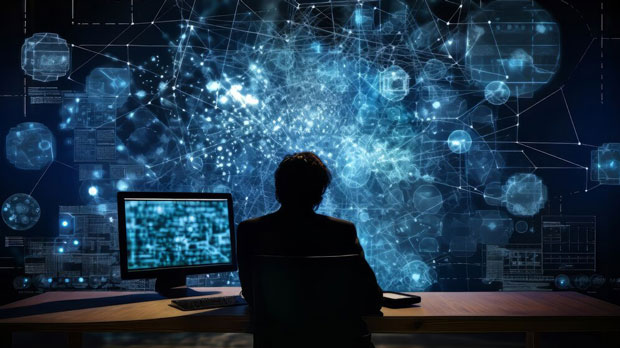In web automation, reliability is paramount. Automation scripts that interact with websites, scrape data, or perform repetitive tasks must be stable and consistent. One of the key tools to enhance this reliability is the use of proxies. Among various proxy types, the PYPROXY socks5 proxy stands out as a reliable and versatile solution. By offering advanced anonymity, security, and performance enhancements, sock s5 proxies can significantly improve the robustness of web automation scripts, especially when dealing with complex tasks or high-volume operations. This article will explore how PyProxy SOCKS5 proxies enhance the stability and success rate of automation processes and why they are an essential tool for developers. Understanding Web Automation and the Role of ProxiesWeb automation refers to the use of scripts or software to perform tasks on the internet without manual intervention. These tasks can range from web scraping to automated testing, form submissions, and content monitoring. In scenarios where tasks need to be repeated on various websites, automation is essential for efficiency.However, web automation also comes with challenges. Websites often implement measures to detect and block automation scripts. These include CAPTCHA tests, IP blocking, rate limiting, and other anti-bot mechanisms. This is where proxies come into play. A proxy acts as an intermediary between the user and the target website, allowing the user to mask their real IP address and bypass these detection methods.Among different proxy types (HTTP, HTTPS, SOCKS5), SOCKS5 proxies are widely regarded as the best for web automation. The PyProxy library, a Python-based tool, simplifies working with SOCKS5 proxies, making them even more accessible to developers.The Key Advantages of Using PyProxy SOCKS5 Proxy in Web AutomationWhen using SOCKS5 proxies with web automation scripts, several distinct advantages arise, which can greatly enhance the performance, reliability, and security of these scripts. Let's delve into the key benefits:1. Improved Anonymity and PrivacyOne of the main reasons to use SOCKS5 proxies in web automation is to ensure anonymity. Unlike other proxies that might leak information such as the user's real IP address or DNS requests, SOCKS5 proxies offer advanced masking capabilities. This level of privacy is critical, particularly when scraping data or performing tasks that involve sensitive or private information.For instance, when multiple requests are made from a single IP address without a proxy, the website may block or throttle those requests to prevent abuse. With PyProxy SOCKS5 proxies, each request can appear as if it's coming from a different location or IP address, reducing the chances of detection. This is especially important when dealing with large-scale automation projects that interact with many websites in a short period.2. Enhanced Reliability and Bypass MechanismsWebsites are increasingly implementing sophisticated measures to detect bots and automation tools. Common techniques include rate limiting, IP tracking, and CAPTCHAs. PyProxy SOCKS5 proxies allow for better circumvention of these detection mechanisms.For example, if a website detects too many requests from a single IP address within a short period, it might block further access. With SOCKS5 proxies, automation scripts can rotate between multiple proxy ip addresses, ensuring that requests appear to come from different users. This rotation not only enhances the reliability of the automation script but also prevents the IP address from being blacklisted or blocked.Furthermore, SOCKS5 proxies support UDP (User Datagram Protocol) traffic, which is essential for applications requiring faster data transfer, such as real-time services and streaming. This protocol support ensures that automation scripts are not hindered by limitations in web traffic protocols.3. Improved Speed and PerformanceWeb automation often involves a high volume of requests, and this can impact performance if not handled properly. PyProxy SOCKS5 proxies help mitigate performance bottlenecks by providing faster connections, especially for scripts that involve scraping data from multiple sources. SOCKS5 proxies offer better speed than their predecessors (HTTP or HTTPS proxies), making them a suitable choice for high-volume automation tasks.Additionally, SOCKS5 proxies do not re-encode the data they transmit, which allows for a more efficient data transfer compared to HTTP proxies that might perform additional processing. This can lead to quicker script execution times, ensuring that tasks are completed efficiently and on time.4. Bypassing Geo-Restrictions and Access ControlMany websites have geo-restrictions that prevent users from certain countries or regions from accessing their content. By using PyProxy SOCKS5 proxies, developers can simulate requests from different geographic locations, allowing the automation script to access content that may otherwise be restricted.This is particularly useful for web scraping or content aggregation tasks where the data needed is location-specific. With SOCKS5 proxies, users can easily rotate between proxies located in different countries, ensuring that geo-restricted content is not a barrier to the success of their automation projects.5. Handling CAPTCHA and Other Security MeasuresOne of the most common hurdles in web automation is dealing with CAPTCHA challenges. These challenges are designed to block automated systems and ensure that only human users can access certain services. While there are several methods to bypass CAPTCHA, using PyProxy SOCKS5 proxies can reduce the frequency of encountering CAPTCHAs by masking the IP address and making it appear as though requests are coming from different sources.This can significantly increase the reliability of web automation scripts, especially when scraping data from websites that frequently implement CAPTCHA. Although it is still necessary to use CAPTCHA-solving services or tools in some cases, SOCKS5 proxies can be an essential component in minimizing the number of times the script encounters CAPTCHA challenges.6. Scalability for High-Volume Automation TasksFor large-scale web automation tasks that involve interacting with hundreds or thousands of websites, scalability becomes an important consideration. SOCKS5 proxies allow developers to easily scale their automation efforts by adding more proxies as needed. With PyProxy, users can automate the process of rotating between multiple proxies, ensuring that the script can continue running at full capacity without hitting rate limits or encountering blocks.This scalability ensures that automation scripts can handle high-volume tasks, such as scraping large datasets, testing multiple pages, or simulating user interactions on various websites.Conclusion: Leveraging PyProxy SOCKS5 Proxy for Optimal Web AutomationIn conclusion, PyProxy SOCKS5 proxies play a crucial role in enhancing the reliability, performance, and security of web automation scripts. By providing better anonymity, circumventing website restrictions, improving connection speeds, and bypassing detection mechanisms, SOCKS5 proxies allow developers to automate tasks more efficiently and reliably. As web automation continues to grow in importance across various industries, the use of tools like PyProxy SOCKS5 proxies will be indispensable for ensuring the success of complex, high-volume automation tasks.Whether you're involved in web scraping, automated testing, or data aggregation, integrating PyProxy SOCKS5 proxies into your web automation scripts is a smart decision that will help you maintain optimal performance and overcome common obstacles.
Nov 14, 2025



































































